|
 |
|
 |
 |
 |
 |
The Nilamata Purana
A Brief Survey
by Dr. Ved Kumari Ghai
The Nilamata is a Kashmiri Purana
referred to by Kalhana as one of the sources of
the ancient history of Kasmira. Buhler, whom goes
the credit of saving its manuscripts, states on
page 41 of his Report, "It great value lies
therein that it is a real mine of information
regarding the sacred places of Kashmir and their
legends which are required to explain the
Rajatarangini and that it shows how Kalhana has
used his sources". But as a matter of fact
the Nilamata gives besides, the account of sacred
places, a lot of information about the Kasmiri way
of living. The picture of ancient 'Kasmira'
presented by its study is not complete and
compact, still it is significant for its value
which is supplementary to that of the
Rajatarangini. While the Rajatarangini acquaints
us with kings, queens and ministers of 'Kasmira',
the Nilamata generally speaks of common men in
their homes, streets, gardens and temples. The
life of the common people, the food and drinks
they took, the amusements they resorted to, the
currents of religious thoughts they followed and
the rites and ceremonies they performed throughout
the year are described therein. If the
Rajatarangini is important from the point of view
of the political history of 'Kasmira', the
Nilamata is no less important for the cultural
history of that part of the country.
Date
Kalhana (12th Century A.D.) refers to it as a work
of great antiquity. The absence of the term 'avatara'
and the use of the term 'Pradurbhava' for
incarnation of gods, non-mention of Kalki,
Krisna's consort Radha and the sacred leaf of
Tulasi, mention of Buddha as an incarnation of
Visnu in a spirit of catholicity and the
incorporation of its various verses into the
Brahma Purana long before the time of Laksmidhara
(1104-1154 A.D.) further indicate its early date.
The textual study of the work shows that some
alterations and additions have been made in it
after the ninth or tenth century A.D. in order to
incorporate into it the monistic Saiva Philosophy
of Kasmira. Had the Nilamata been composed after
the ninth century A.D. there would have been no
scope for such change. The lower limit of the date
thus may be eigth century A. D. and the upper one
about the sixth century A.D. as Buddha began to be
regarded as an incarnation of Visnu from about 550
A.D.
Out-line of the contents
The Nilmata opens with Janamejaya's enquiry from
Vaisampayana as to why the king of 'Kasmira' did
not participate in the war of Mababharata although
his kingdom was not less important than any other
in the country. Vaisampayana states that some time
before the Mababharata war was fought, king
Gonanda of Kasmira had been invited by his
relative Jarasandha to help him in a war against
the yadavas. Gonanda complied with his request and
was slain on the battle field by Krsna's brother,
Bala. In order to avenge his father's death,
Gonanda's son Damodara went to Gandhara to fight
with Krsna who had gone there to attend a
Svayamvara. Krsna killed Damodara in the fight but
taking into consideration the high sanctity of
Kasmira, he coronated his rival's pregnant widow
Yasovati. Damodara's Posthumous son Bala Gonanda
was a minor at the time of the great war, so he
did not join either the Kauravas or the Pandavas.
Vaismpayana points out the importance of 'Kasmira'
by referring to its numerous charms and its
identification with Uma. He points out further
that the valley was originally a lake known as
Satisaras. This leads to the question about the
origin of 'Kasmira' to which Vaisanipayana replies
by relating a dialogue held previously between
Gonanda and the sage Brahadasva.
Brahadasva gives at first the account of the
divisions of time, the destruction of the world at
the end of manvantara, the presevation of Manu and
the seeds in a ship, the birth of the land and the
lake, of Sati, the origin of various tribes from
Kasyapa and Visnu's allottment of Satisaras to the
Nagas. Then follows the story of the demon
Jalodbbava born in the waters and reared by the
Nagas. Having obtained boons from Brahma, the
demon began to destroy the descendants of Manu
dwelling in the lands of Darvabhisara, Gandbars
Jubundura, the Sakas, the Khasas etc. Seeing this
devastation, Nila the king of the Nagas approached
his father Kasyapa and prayed to him to intercede
with the gods to punish the evil-doer and to save
the innocent victims. He requested the gods,
Brahma, Visnu and Siva to do the needful. Visnu
followed by Brahma, Siva and various other
deities, proceeded to Naubandhana to punish the
demon. The demon was imperishable in the waters;
so Visnu asked Ananta to make an outlet for the
waters by breaking forth the mountain-barriers. He
did accordingly. Visnu then cut off the demon's
head with his disc. Now the dry land being
available in the valley, Kasyapa expressed the
desire that it should be inhabited by the Nagas as
well as by the descendants of Manu. The Nagas,
however, flatly refused to have Manavas as their
co-habitants. Filled with rage Kasyapa cursed them
to live with the Pisacas. At the request of Nila
the curse was modified to the extent that the
Pisacas would go every year for a period of six
months to the sea of sand and the Manavas would
live in the land jointly with the Nagas during
that period. Visnu further assured the Nagas that
the occupation of Kasmira valley by the Pisacas
would last for four ages only.
After the passing away of the four ages, the
Manavas, as usual, had gone out for six months. An
old Brahmana, Candradeva did not accompany them.
Troubled by the Pisacas he approached the Naga
King Nila and begged of him to ordain that 'Kasmira'
might henceforth be inhabited by Manavas without
the fear of emigration. Nila complied with this
request on the condition that the Manavas should
follow his instructions revealed to him by Kesava.
Candradeva lived for six months in the palace of
Nila and was initiated into the mysteries of rites
or ceremonies prescribed by Nila. In Caitra, when
the emigrant population of 'Kasmira' came back, he
related the whole incident to Virodaya - king of
Manavas. The lengthy dialogue held between Nila
and Candradeva describes sixty five rites.
ceremonies and festivals many of which are similar
to those mentioned in other Puranic works and
observed in many parts of India, while a few are
peculiar to Kasmira only. At Janamejaya's enquiry
as to what Gonanda had asked after listening to
the teachings, another dialogue between Gonanda
and Brhadasva follows. Gonanda expresses his
desire to know the names of the principal Nagas
dwelling in Kasmira and Brahadasva enumerates not
fewer than Sir hundred Nigas. He expresses his
inability to enumerate all the Nagas, as their
number was too great. He further refers to four
Nagas, the guardians of directions and relates the
story of the Naga Sadangula and the Naga Mahapadma.
Then follows Gonauda's enquiry about the sacred
places of Kasmira and Brhadasva's reply referring
to various places dedicated to Siva and other
deities. Two names Bhutesvara and Kapatesvara
raise Gonanda's curiosity which leads Brhadasva to
relate Bhutesvara Mahatmya and Kapatesvara
Mahatmya. Then follows the enumeration of the
sacred places of Visnu and other tirthas situated
in the valley of Kasmira. Thereafter is given the
eulogy of the river Vitasta and the work ends with
the remark that, as this treatise in the form of a
dialogue between Janamejaya and Vaisampayana was
not useful everywhere (i. e. was of local interest
mainly), Vyasa did not include it in the Maha
Bharata lest that should become too exhaustive.
Birth of 'Kasmira'
The Nilamata legend of the origin of 'Kasmira' as
a result of the draining off of the lake, occurs
in Kalhana's Rajatarangini, and in a bit changed
form, in the Mahavamsa, the Chinese Vinaya of the
Mula Sarvastivadin sect and in the account of the
travels of Hiuen Tsang. Whether it was the
basin-like shape of the valley of 'Kasmira' which
suggested this legend or the memory of some old
age when the area of Kasmira under water was more
than what it is now, was responsible for it,
cannot be stated with certainty; but it is
interesting to know that the geological
observations made in recent times corroborate the
assertion made in the Nilamata.
The lowest point in the valley with high
mountain walls on all sides is 5200 feet high
above the sea level, and the lowest pass in the
Pirpancal range, forming its outer boundary, is
3000 feet above the valley. The only outlet for
the drainage of the valley is the narrow
rock-gorge at Baramula.
Now nearly half of the area of this
basin-shaped valley is occupied by the Karewas
(Flat-topped mounds composed of clay and silt with
thin layers of greenish sand) and the present view
to quote D. N. Wadia regards "the Karewas as
the surviving remnants of deposits of a lake or
series of lakes which once filled the whole valley
basin from end to end". Of course it will be
going too far to suggest that some geological
tests were at the basis of this legend. The most
plausible hypothesis is that the idea of the great
lake was suggested by the basin-like shape of the
valley and after this, it was just one step more
in the making of mythology to attribute the
drainage of water through an outlet in sandstone
wall of the western corner of the basin, to a
divinity like Ananta.
Geography
Like other puranic works, the Nilamata also deals
with geography of the world and mentions seven
Dvipas, namely Jambu, Saka, Kusa, Kraunca, Salmali,
Gomeda and Puskara. Of these seven, Jambudvipa as
nine Varsas namely Uttarakuru, Ramya, Hairanvata
Badrasva, Ketumala, Ilavrta, Harivarsa, Kimpursa
and the last one i. e. Bharataversa alone seems to
present India proper. More significant is the
information about the tirthas particularly of
Kasmira, mentioned in four lists occurring in the
later half of the work. These lists are of special
interest for the geography of Kasmira but it also
deserves to be noted that the reference being too
brief it is not possible to identify most of the
place-names, especially those which are not
mentioned in Kalhana's Rajatarangini or some other
work of geographical value. It is also interesting
to note the similarity of the nomenclature of
Kasmira as found in the Nilamata with that of
other parts of India. It seems that the people who
had come from various parts of India to inhabit
the valley of Kashmira named its beautiful spots
after the tirthas farriliar to them, they thus
recognized prayaga the holy confluence of the
Ganga and the Yamuna in the coofluence of the
Vitasta and the Sindhu and regarded the area
extending from Trikotisangama to Har and from the
confluence of the Pavana and the Rajobinduvinimala
to Ciramocana, as holy as Varanasi. The names like
Sarasvati Rsikulya, Ramahrada, Bhrgutunga,
Mundaprastha, Citrakuta, Bharatagiri Kamatirtha of
Kasmira are also names of various tirthas of other
arts of India.
Tribes
About the inhabitants of ancient Kashmira, the
Nilmata has preserved highly valuable information.
The original inhabitants of be valley were the
Nagas; then came the Pisacas and the Manavas.
Being the original occupants of Kasmira, the Nagas
did not like introduction of the Pisacas or the
Manavas into the valley, but tbe selection was to
be made between these two, they preferred Manavas
to the Pisacas. The other tribes which are
described occupying the neighbouring countries are
the Madras (inhabitants the modern Sialkot and the
surrounding regions between the Irava and the
Chandrabhaga) the Darvas (inhabitants of Darva
identified with the districts of Jammu and
Ballavar) the Abhisaras (inhabitants of modern
Punch and the area near it) the Gandharas
(inhabitants of Peshawar, Rawalpindi etc.),
Juhundaras probably same as Jaguda (inhabitants of
Afghanistan), the Sakas, the Khasas, the Tarigams,
Mandavas, the Antargiris and the Bahirgiris.
Indirect mention of Yavanas is also made in the
Naga name Yavanapriya.
Social, Political and Economic Life
Regarding social, economic and political life in
Kashmira the Nilamata has brought to light a few
interesting points. The Brahamanas, especially
those who were "Itihasavidah" and "Kalavidah"
were highly honoured, but the Sudras too were not
considered degraded. The humane treatment mcted
out to the servants is a pleasant feature of
social organisation of Kashmira revealed by the
Nilamata. The Nilamata often includes the servants
also in the list of the persons in whose company
the house-holder feasts and enjoys. The artisans
like weavers and carpenters etc. commanded so much
respect in the society as to exchange gifts with
the higher varnas during the Mahimana
celebrations. The very fact that the Nilamata
describes the Sudras as taking part in the
coronation ceremony of the king indicates that
they were not cansidered debased.
Another enlivening feature of the Kashmiri
social life as seen in the Nilamata is the
position of women. Nowhere is she considered
"the living torch illuminating the way to
hell", or the devourer of the intellect of
men. There is no reference to any veil worn by her
and she moves quite freely in the society
emulating as it were the free moving sparkling
waters of the springs of the country. In the
moon-lit night of Kaumudi Mahotsava we find her
sitting beside the sacred fire in the company of
her husband, children, servants and husband's
friends, although it is not clear as to whether
she is merely a silent spectator or she takes
active part in the musical and dramatic
performances given during this night. She is
present in the common feast which takes place on
the next day. Not only in the festivals celebrated
at home, but also in the outdoor festivals, she is
seen enjoying herself. The peasant's wife is lucky
enough to participate in the joyous festival
celebrated in the refreshing open fields of nature
in connection with the ploughing of the fields and
sowing of seed. The Nilamata does not deny
water-sports to the ladies of Kasmira. The young
maidens, it says, "should specially play in
the waters" during the celebrations of
Sravani festival. Playing with men folk is allowed
to women. "The joyful ladies", it says
"dressed in their best attire, perfumed with
scents and decorated with ornaments should sport
in the company of men on the last day of Mahimana
celebrations." The ladies of the home are
honoured on various occasions. On the full moon
day of Margasirasa, the gift of a pair of red
clothes is prescribed for a Brahmana lady, for the
sister, for the paternal aunt and for the friend's
wife. The mention of the presentation of gifts to
friend's wife is quite significant as it could
have been possible only in a free atmosphere where
women were allowed to move freely with no
restrictions on their receipt of gifts from their
husband's friends.
As regards their place in the religious life,
they are not only allowed to accompany their
husbands in the performance of various rites and
ceremonies but are also enjoined upon to perform
singly some rites specially prescribed for them.
The predominance of the Goddesses in the religion
depicted in the Nilamata is another factor
pointing to the high status of women. The very
land of 'Kasmira' is a mother Goddess 'Kasmira', a
form of Uma. Numerous references are made to
courtesans in connection with the description of
festivals. The use of a simile comparing 'Kasmira'
with a temple due to the presence of tender ladies
indicates the popularity of the institution of
Devadasis or temple-dancers.
On the whole, the Nilamata offers a pleasant
picture of women of 'Kasmira'. As a daughter she
was trained in fine arts and was allowed to move
freely in the society. By giving her in marriage,
the father obtained religious merits. As a wife
she was loved and honoured by her husband and as a
mother she shone with her sons who revered her
highly. A would be mother could even be installed
on the throne on the demise of her son-less
husband-king.
This unconventional account of the women of 'Kasmira'
is quite different from the account available in
other Puranas and so it gives a distinctive
character of the Nilamata.
Entertaining of guests is another notable
feature of the social life of Kasmira depicted in
the Nilamata. Even the king is enjoined upon to
honour the immigrants from all the quarters.
The people were fond of music, dancing, drama
and other means of recreations, which indicates
their general prosperity depending upon
agriculture aod trade. The general terms used for
the musical instruments are Vadya, Vaditra and
Vadyabhanda. We find reference to Vina (the modern
hundred stringed Santoor of 'Kasmira' is probably
satatantrivina or Vana referred to in the
Taittriya Samhita), Venu (flute) Sankba ( conch),
Pataha ( Drum ) and Muraja ( tambourine ). Dances
were performed on religious occasions and in
social gatherings held in honour of seasonal and
agricultural festivals. The words "Preksa"
mentioned in the Nilamata refers to the tricol
performances. The Nilamata mentions also a
peculiar Phrase "Preksadana" literally
meaninp "the gift of a dramatic
performance". It seems to have denoted
"a gift made for the arrangement of a
dramatic show". There may have existed some
dramatic clubs which have such shows on demand and
the injunction of "Yathavidhi preksadana"
i. e. the gift for the arrangement of a dramatic
show made in the proper procedure, may have been
made with reference to them.
As regards the art of image-making, the
Nilamata refers to images made of stone, clay,
gold, silver, copper, brass, wood, sand, straw and
ghee. References are made to printings on the
cloth, the wall and the ground. The people are
directed to decorate the Caityas with beautiful
paints on lord Buddha's birthday. A circular
pattern is drawn on the ground on which a 'Kashmira'
bridegroom had to stand before entcring for his
marriage the house of the bride. This is a direct
descendant of bhumisodha mentioned in the Nilamata.
Of the items of dress, mention may be made of
pravarana which seems to be the same as pravara
mentioned in the Mahabharaata as a cloth offering
protection against cold. Kashmiri pheran is most
probably derived from pravarana.
Meat seems to have been a popular item of diet
otherwise there would have been no necessity of
prohibiting strongly the eating of meat for five
days dedicated to the worship of Visnu. Wine is
recommended as a drink on new snow-fall day and
Iraman Jari Pujana.
In the sphere of political thought, there
existed a belief in the divinity of kingship along
with the theory that law is superior to the king.
It is stated in a verse that the king of 'Kasmira'
is a part of Hara and should not be disobeyed. The
same verse is quoted by Kalhana with the
significant expression "even a wicked
one" added to the king. Compared with
Bhisma's statement in the Mahabharata that a
virtuous king is truly a god, this difference of
statement of the Rajatarangini from that of the
Nilamata shows a gradual development of the theory
of absolute monarchy. The survival of a few
republican elements is also indicated by the terms
pradhana and ganamukhya.
Concerning religious life it shows not only the
other cults adopting the Naga deities but also the
Naga cult bringing the deities of other cults into
its fold. Bhava Mahadva and Sambhu which are names
of Siva, Guha and Kumara which are names of Siva's
son, Narayana and the four yuhas Vasudeva,
Sankarsana, Anirudha and Pradyumna, the epic
heroes Rama, Lakshmana and Yudhisthira all appear
in the Naga list of the Nilamata. On the whole the
Nilamata reveals the spirit of compromise and
synthesis in the field of religion. The Brahmanic
deities, the Nagas, tbe pisacas, the Buddha all
receive their due share of worship from the
inhabitants of 'Kasmira'. The followers of cults
are stated to be free to worship their respective
deities but the different deities are described as
honouring one another and thus creating an atmosphere
in which various cults are united.
In the field of philosophical thinking the
Nilamata presents the same theistic samkhya which
appears in the epics and other Puranas. It would
be going too far to suggest that it contains the
tenets of the Moniastic Saiva philosophy of 'Kasmira'.
It is clear that the cult of Visnu, Brahman, Siva,
Surya, Durga, Nagas, Buddha etc. flourished side
by side in the time of the Nilamata Vaisnavism no
doubt occupies a prominent place in this work but
there is no indication of the creator of the
creator, illuminating Brahma. Uma is the mother
antagonistic attitude towards other cults. In the
field of philosophical thoughts the Nilamata
presents also a compromise regarding the problem
of creation; it uses the terminology of the
Samkhya referring to Indriyas, Indriyarthas,
Mababhutas Manas, Buddhi, Atma, Avyakta and Purusa;
but it does not accept its atheistic metaphysics.
The five gross physical elements-Earth, Water,
Fire, Wind and Ether - which may stand for the
solid, liquid, gaseous, aerial and ethereal states
of matter, are stated to be the supporters of the
world, but behind these is seen the working of the
force of the Supreme Spirit. The epithet
"Cause of the causes of the world"
applied to Visnu and Brahma indicates that along
with the Supreme Spirit, the final cause, there is
also Prakriti, the immediate cause of the world.
At one place, Shiva's epithet "Saksivat
sthitah" sounds like that Sankhya Purusa but
unlike the latter He is regarded as the creator,
the sustainer and the destroyer of the world.
Three qualities of Rajas, Sattva and Tamas are
also referred to and are associated with the power
of creation, protection and destruction.
The theology of the Nilamata is replete with
numerous gods and goddesses. The trinity of Brahma,
Visnu and Siva plays due role but there are others
like Indra, Varuna, Yama, Karttikeya, Baladeva;
Asvina, Martits, Visvedevas, Vasus, Yaksas, Nagas,
Gandharvas, Prthivi, Surabhi, Sita, Saci, Laksmi,
Uma, Syama, Bharati, Prajna, Mati etc. The
tendency of describing one deity as the highest
among others at one time and transferring the same
epithet to the other at another time is clearly
perceptible in the praises of Brahma, Visnu, Siva,
Nila and the goddesses Uma and Laksmi. At some
places, Visnu is praised as the best amongst the
gods, unfathomable, the highest, the eternal, the
refuge of all gods, the lord of the gods, cause of
the causes of the world, the lord of three worlds,
worshipped by Siva, praised by Brahma, but at
other places Brahma is described as the cause of
the causes of the world, the lord of three worlds,
the lord of the god of the gods, the lord of all,
the omniscient, the real force behind all the
elements, the preceptor of the world and the
sustainer of the world. Siva is also eulogised as
the preceptor of the world, the lord of world, the
lord of the gods, the lord of the god of the gods,
and the highest lord.
Even the Naga deity Nila is described as the
lord of the gods, the creator of the creator,
illuminating Brahma. Uma is the mother of all
gods, higher than Sarva, and Laksmi is raised to
the highest position by saying that all the
goddesses are her forms.
The idea that the whole world is God or a
manifestation of God is also present in the
Nilamata. The whole earth is a form of the goddess
Sati. The earth, the water, the air, the sky, the
fire, the sun, the moon, and the sacrificer, all
these are regarded as eight forms of Siva.
The doctrine of monism, according to which
there exists only a single principle from which
everything is evolved, is also found in the
Nilamata, Brahma in the Nilamata seems to have
been identified with the Brahma of the Upanisadas,
for He is recognized as the only element in the
universe except whom there exists nothing. He is
the knower and the thing to be known, the body and
the soul, the meditator, the object of meditation
and the meditation itself.
He is also of unknown birth. In the eulogy of
Nila there is a reference to Brahma in the
Upanisadic style. This Brahma is indivisible,
imperishable and the highest. Due to its
minuteness it is called Ether. The statement that
it is minute as well as great, uncreated as well
as possessed of limbs reminds one of similar
statements found in the Katha and the Svetasvatara
Upanisads. Of course, the Nilamata does not give
us clear-cut monism; it has just paved the way for
the Monistic Saiva Philosophy of Kasmira.
POSTED BY: VIPUL KOUL EDITED BY : ASHOK KOUL | | | | | |
|
|
|
|

















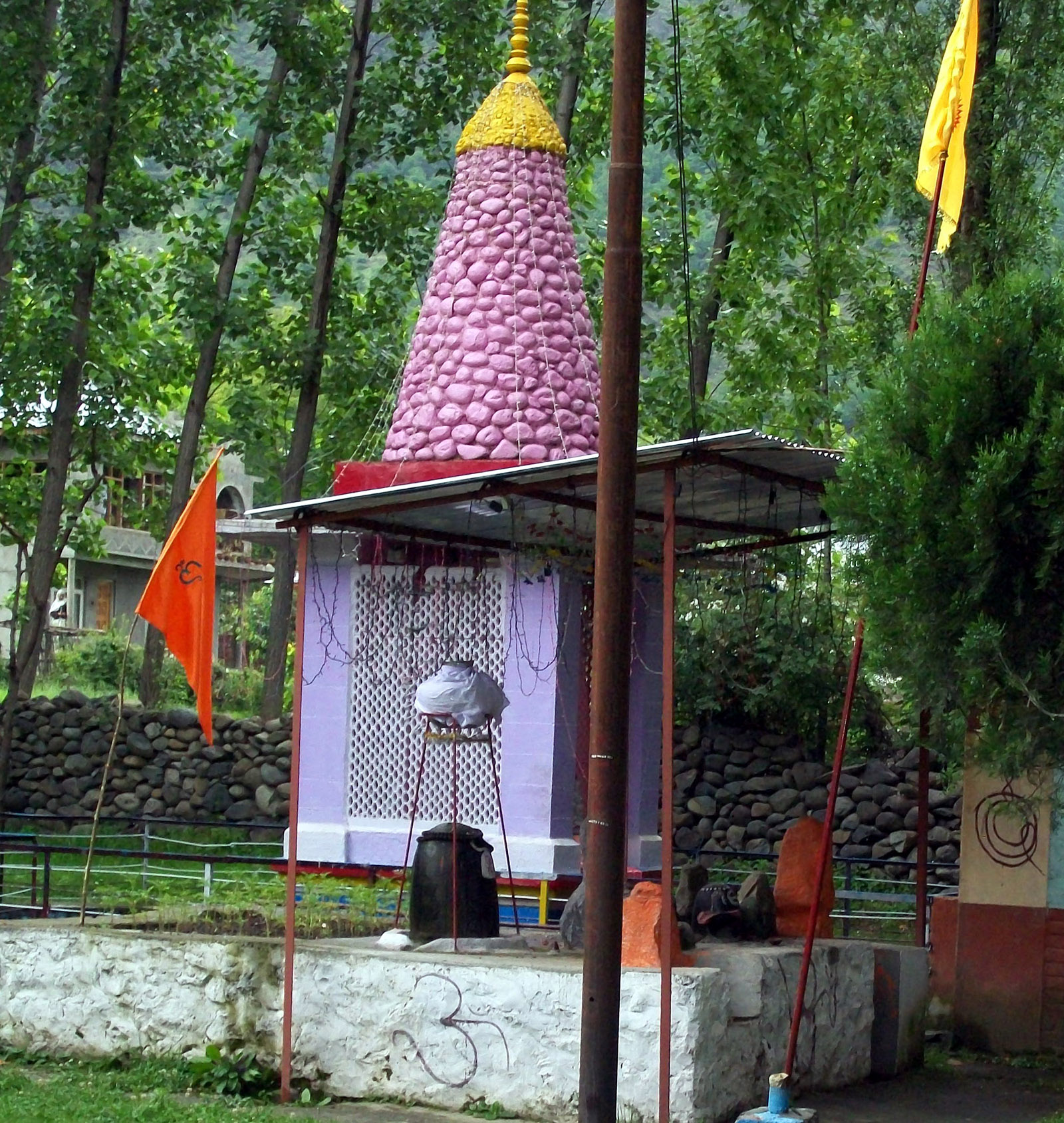
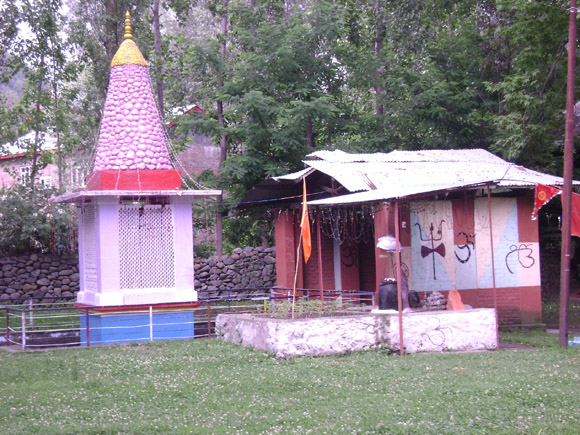

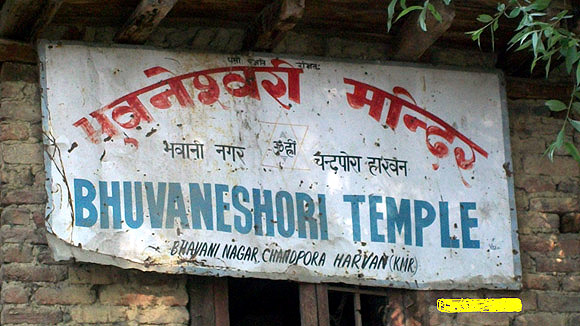

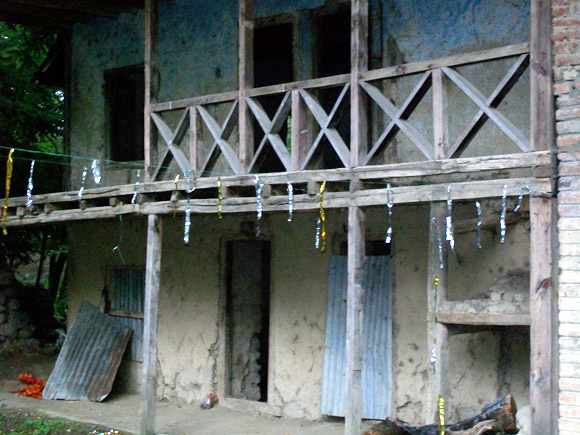

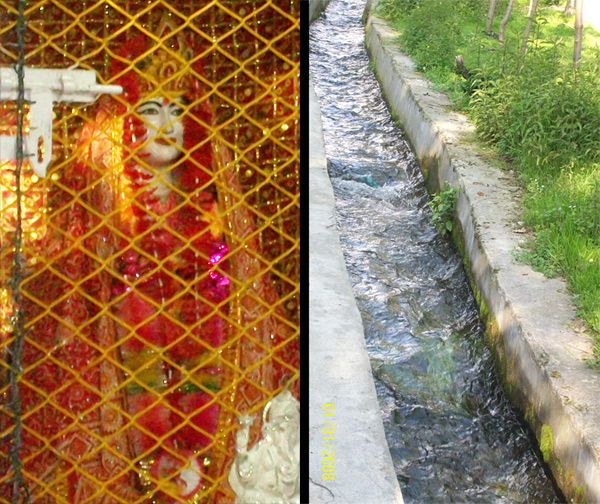
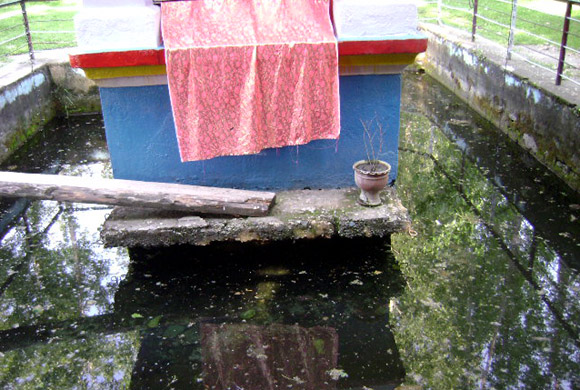
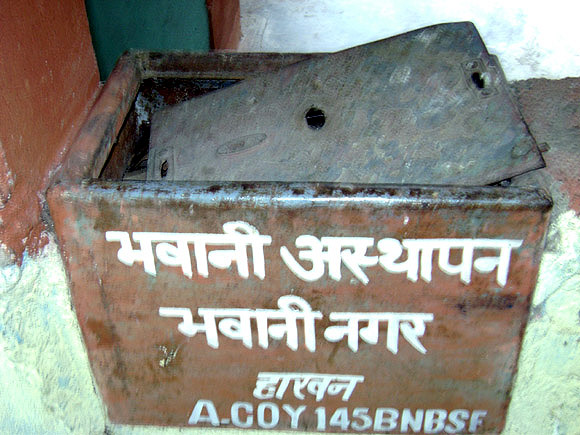
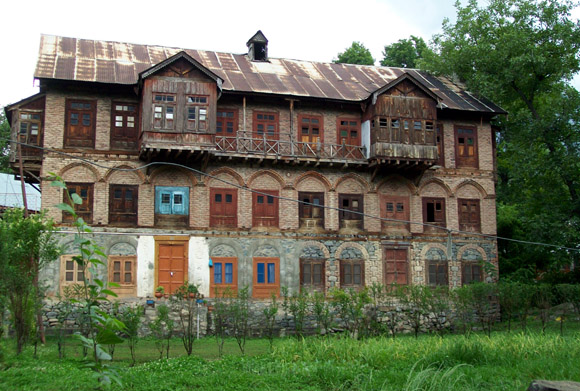
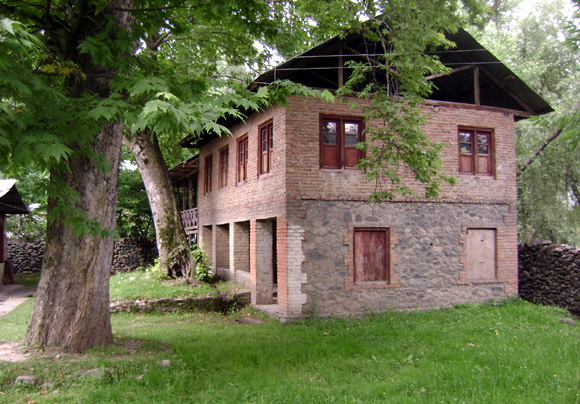

 *Born on 20th March, 1960 in Murran a village in North Kashmir,
Chander M. Bhat is presently working as an Assistant Supdt. Posts, in
Department of Posts, Govt. of India. His articles regarding Posts and of
non-political nature stand widely published in various papers and
magazines of the country. A booklet 'How to Collect Stamps" published by
the Department of Posts, has earned him genuine accolades. He worked on
the project of tracing the roots of his co-villagers and of the village
Murran, resulting into the culmination of a widely acclaimed book
"Murran -My Village". Man with depth, Chander M. Bhat has also another
book, "Ocean by Drops" (collection of poems) in his vase having colorful
poems. His book "Ancient History of Jammu and Kashmir", confirms his
researching capability. Various research papers like "The Splendor that
is Amarnath" and "Vitasta" The Sacred River of Kashmir" are valuable
additions to his works that has proved very fruitful and guiding force
in the exile period of Kashmiri Pandits community of which the author is
also a member.
*Born on 20th March, 1960 in Murran a village in North Kashmir,
Chander M. Bhat is presently working as an Assistant Supdt. Posts, in
Department of Posts, Govt. of India. His articles regarding Posts and of
non-political nature stand widely published in various papers and
magazines of the country. A booklet 'How to Collect Stamps" published by
the Department of Posts, has earned him genuine accolades. He worked on
the project of tracing the roots of his co-villagers and of the village
Murran, resulting into the culmination of a widely acclaimed book
"Murran -My Village". Man with depth, Chander M. Bhat has also another
book, "Ocean by Drops" (collection of poems) in his vase having colorful
poems. His book "Ancient History of Jammu and Kashmir", confirms his
researching capability. Various research papers like "The Splendor that
is Amarnath" and "Vitasta" The Sacred River of Kashmir" are valuable
additions to his works that has proved very fruitful and guiding force
in the exile period of Kashmiri Pandits community of which the author is
also a member.



